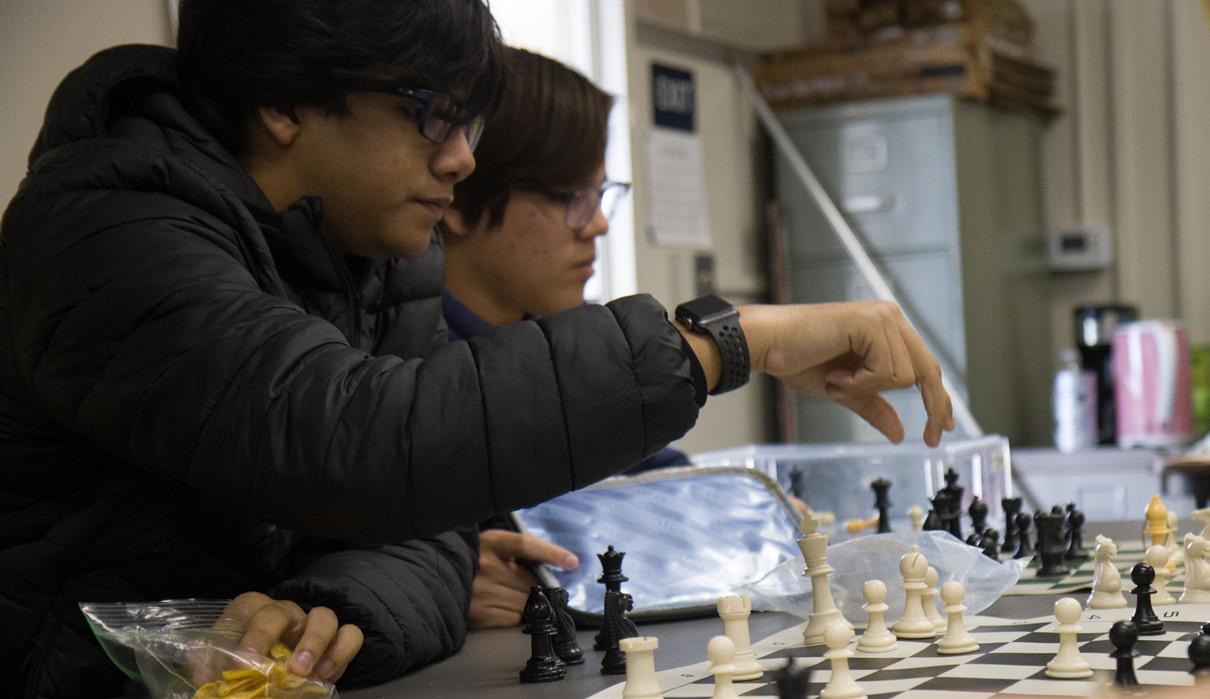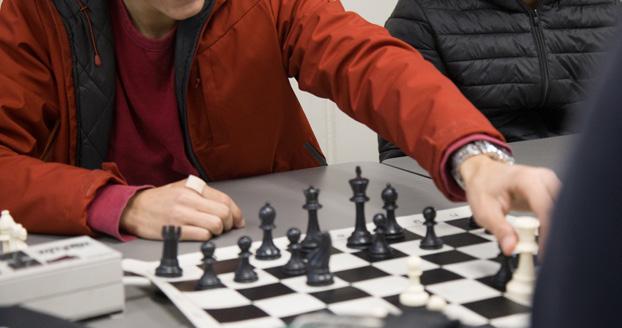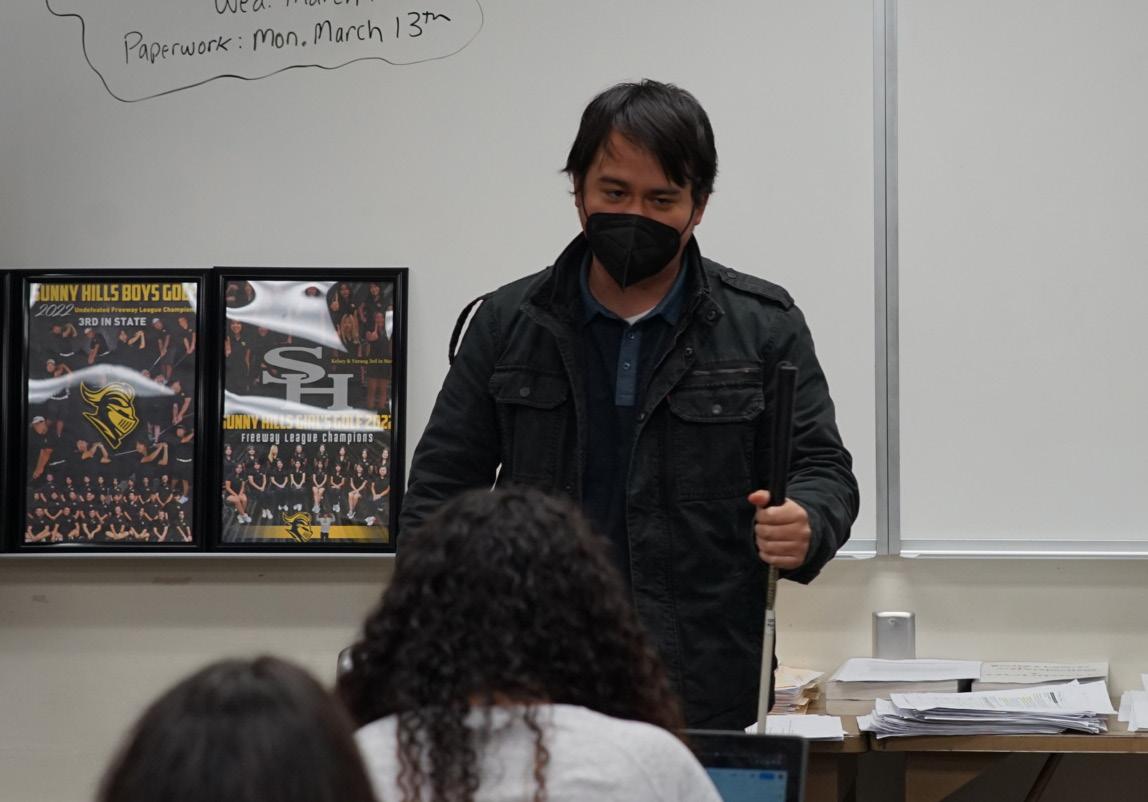
3 minute read
positivity movement
packs now, Villanueva said he’s realized a much more meaningful message behind the business.
“I respect it so much because we’re taught that having perfect skin is what’s beautiful,” the senior said. “But Starface teaches us that you should love your pimples, and the patches are obviously cute.”
Advertisement
Alongside Villanueva, Sunny Hills students have started sporting these patches as a way of embracing their skin while also de-stigmatizing acne.
Coming in pocketable and reusable pods that open up like hand mirrors, Starface’s bestseller, the Hydro-star, comes with a total of 32 yellow star-shaped pimple patches at $14.99. It can be bought on its website or at local stores.
Since its release, the brand has dropped an array of different hues, such as rainbow and black, also partnering with franchises like Hello Kitty to release various shapes as limited deals.
“I like how Starface is so decorative,” said junior Lara Martinez, who’s also tried rainbow heartshaped ones. “It's a great way to just treat your acne, and they can also be a cute little accessory to your daily outfit.”
Co-founded by former Elle magazine beauty director Ju- lie Schott in 2019, the signature star-figured pimple spot treatment has since become a TikTok favorite with “#starface” garnering over 279 million views.
However, according to a Feb. 15 Accolade online poll, 42% of 107 responders said they’ve never heard of this product before.
Freshman Sarah Martell suggests otherwise.
“I’m surprised that not many people know about it yet,” Martell said. “Most of my friends use it, and my skin improved a lot afterwards, especially because I used to use makeup instead.”
On the other hand, sophomore
Club Corner
Emily Boyer said she prefers the traditional patches to help her acne.
“I’m sure it’s different for everybody, but I like to use [Starface] as a sticker more than a patch just because others work better,” said Boyer, who wears the Mighty Patch overnight and Starface during the day.
Though some critics have argued Starface’s contradictory message about encouraging acne acceptance, yet marketing treatment for it, Villanueva said overcoming the insecurity during breakouts is what matters.
“Don’t get me wrong, I don’t like acne,” Villanueva said. “But it makes you smile when you put [Starface patches] on in the mornings, and it makes the time while your pimple lasts enjoyable — it’s money well spent.”
For the full story, go to shhsaccolade.com
Gone are the days chess players triumphantly declare, “Checkmate,” to the opponent sitting across from them.
It’s good news in more than one way for Chess Club president sophomore Ayden Nagabayashi. For one, Nagabayashi can now play anywhere — in the classroom or during a car ride home.
That’s because a new form of chess has become prevalent in the way students play the classic game.
“I loved chess, but now I love it even more,” Nagabayashi said.
Many students like Nagabayashi are gravitating toward the 15-year-old website, chess.com, to either take on its artificial initelligence or compete against other users.

Despite not having to have the physical pieces and board, the online game has motivated some to seek out live competitive play with other Chess Club members.
“We gained over 15 members recently,” Nagabayashi said. “More than three or four times as many people have started to regularly come to our chess meetings since last year because of chess.com.”
He credits the trend to TikTok and other platforms where content creators post chess content, such as game analyses, and build an online community.
“I used to have to search up chess videos, but now it just appears on my feed like through my YouTube algorithm,” he said. “If you look at these posts, there’s like a chess clique online who all have a passion for chess.”
The Chess Club meets Wednesdays at lunch in Room 52. For more information contact Nagabayashi at 600018641@fjuhsd.org.
For the full story, go to shhsaccolade.com
Blurs, floaters and light movement.
That is what English instructor Scott Enrico’s student teacher, Isaac Rico, is limited to seeing on a daily basis.
But such a disability hasn’t stopped Rico from doing what he wants and achieving his goals.
“I have a vision to sort of get around campus, but I carry the cane just to [inform] everyone that I am partially blind,” he said. “So if I bump into anyone, they’ll know it is literally by accident.”
At the age of 10, Rico said his doctor diagnosed him with neu- romyelitis optica, a condition that can potentially harm people’s eyes, brain and spine enough to make them require the usage of a wheelchair. He is able to move around normally while sustaining a rough 80% vision in his right eye but low vision in his left.
“I’m lucky enough that it just affected my eyes,” he said. “I have been pretty fortunate to stay stable and not lose any more vision than I already have.”
With the disease not severe enough to interfere with his passion — teaching English — the student teacher practices his craft with Enrico’s fourth and fifth English 3 students since the start of the spring semester.










